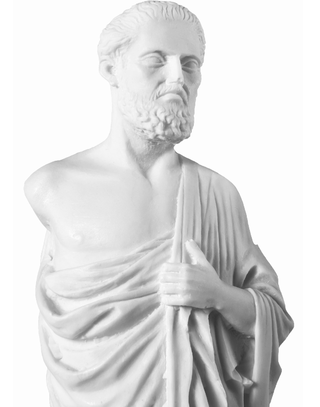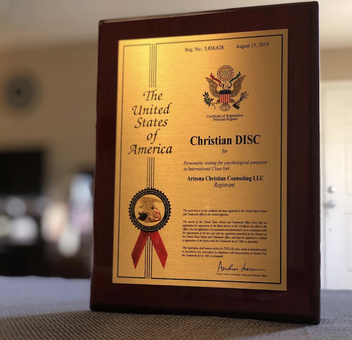History of the DISC
This is a brief overview of the DISC personality system — tracing its origins, its progression, and its adoption in various sectors over the years. The timeline culminates with the introduction and unique influence of the Christian DISC® and its role in this history.

4th Century B.C.
Ancient Beginnings
Hippocrates, an ancient Greek physician and philosopher, identified four temperaments that he believed were related to an individual's physical and emotional characteristics.
These temperaments were based on the concept of humors, or bodily fluids, which were thought to affect a person's health and temperament. These temperaments were named: choleric, sanguine, phlegmatic, and melancholic. While modern science has largely discredited the idea of humors, the four temperaments identified by Hippocrates have had a lasting impact on the study of personality and human behavior.

Middle Ages
Adopted by the Church
The four temperaments were later adopted and adapted by various philosophers and theologians, including those in the Catholic Church during the Middle Ages. The Church saw the four temperaments as a way to understand human nature and behavior and to help guide individuals in their spiritual lives.
During this time, the Church used the four temperaments to categorize individuals into different personality types. These four temperaments were also used to understand and interpret different aspects of Christian theology and were seen as a way to help individuals understand themselves and their place in the world.

Early to Mid 20th Century
A Comic Book Creator
William Moulton Marston developed the DISC model based on his observations of human behavior and emotions. Marston was a psychologist, lawyer, inventor, and the creator of Wonder Woman. As a psychologist, Marston was interested in understanding how people's behavior and emotions influence their actions and was inspired by the four temperaments when he devised his DISC model.
Marston believed that people's behavioral tendencies could be categorized into four basic styles, which he originally named Dominance (D), Inducement (I), Submission (S), and Compliance (C). Marston's DISC model was not a standardized assessment tool when he first developed it in the 1920s, but it has since been refined and improved upon by other practitioners and organizations to create the DISC assessment.

Mid 20th Century - Now
DISC Through the Decades
Though the original DISC model was based on Marston's observations of human behavior, and it was not a standardized assessment tool. However, in the 1950s, Walter Clarke, a psychologist and industrial consultant, developed a standardized DISC assessment based on Marston's work. Over time, the DISC assessment has been refined and improved, with new versions developed by different organizations and practitioners. The DISC assessment has a long history of use across various industries and fields including the military, human resources, sales, leadership development, and education.

2017 - Now
Introducing the Christian DISC®
The Christian DISC® was introduced in 2017 and merged biblical principles with the foundational concepts of the original DISC assessment. Since then, the tool has been used in countless churches, counseling centers, and faith-based organizations across the country. The Christian DISC® was trademarked in 2019 and a certification program for counselors, pastors, coaches, and leaders was launched the same year.
